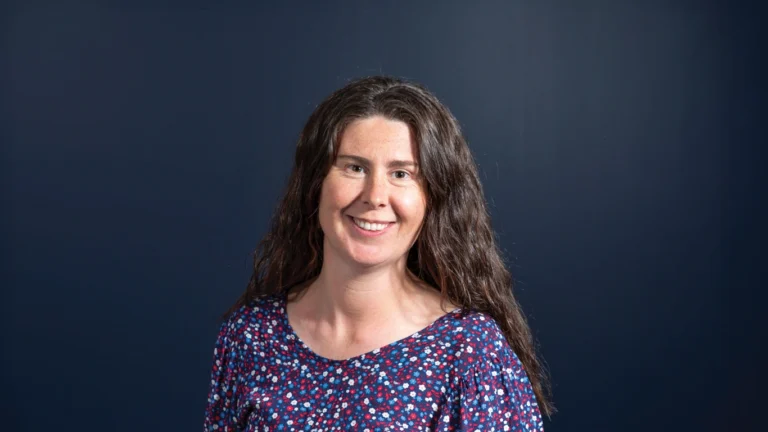InView Magazine: Issue 8 out now!

Happily, Bjarne Tellmann (FjordStream Advisors CEO and veteran general counsel) published Building an Outstanding Legal Team in 2017 – and it has become a go-to for GCs looking for strategies to navigate the demands of the 21st century corporate world.
In episode eight of The Legal Leaders Podcast, Bjarne talked to InView about how the role of GC has evolved, and offered his seasoned advice to those embarking on a new role.
The word team is fundamental to Bjarne’s legal leadership ideology; it is central to the framework he has created for dealing with the high-pressure, high-stakes world of in- house legal. He believes complex problems can’t be solved by individuals, that they require a team effort – much like an orchestra. “No matter how good the conductor is, if the musicians aren’t there, you’re not going to be able to play the symphony,” he says. “And if any one of the musicians is not present, the music is not going to sound the same as if everyone was there and playing together.”
Swap out playing for working together, and the importance of teamwork becomes Bjarne’s blueprint for the way that a GC should approach managing a legal team within a business which is large and dispersed – the very definition of complexity. “Every visionary leader has, at some point, recognized the importance of the team in this context – and ultimately realized that the role of the leader is to help set the direction. Success of the initiative will depend on the collective output of the group.”
Bjarne points out that the role of GC has evolved over recent decades – and that the thread running through that transformation process is disruptive complexity, with the demand for legal services increasing even as resources shrink. Over the past 17 years, he says, a convergence of technologies, including AI, biotechnology, gene editing, and advanced robotics, have blurred the boundaries between the physical, digital, and biological worlds. Coupled with this has been the shift in the way that global production and supply processes operate, including machine-to-machine communication, smart technology, and smart manufacturing.
The result, Bjarne says, is a complex environment in which many companies are confused about what business they’re in and who their competitors and customers are. In fact, in many cases, a company’s biggest customer is also potentially their biggest competitor. A significant knock-on effect of this uncertainty is that the generous budgets once enjoyed by in- house teams are shrinking.
“Companies aren’t willing or able to provide the resources they used to. You can’t hire more heads; you’ve got to really think about how you’re going to deliver the same or better services in a more complex and fast-moving environment. And that is a challenge which requires a whole set of organizational skills that you don’t learn at law school.”
“You can’t just hire more heads; you’ve got to really think about how you’re going to deliver the same or better services in a more complex and fast-moving environment.”
According to Bjarne, while the role of GC used to only be about providing accurate legal advice, nowadays, in addition to that, it has a lot to do with stepping up and becoming a leader in your own right. “You have to almost become a mini- CEO, thinking about the legal organization you’re operating in as if it were a standalone business with a single client – which is the company you serve.”
Being a leader often requires a GC to wear multiple hats: chief technology officer, chief project manager, chief financial officer, compliance officer, and procurement expert. Also essential in their toolbox of skills is the ability to understand human organizational capability and emotional and cultural intelligence, as well as being a great communicator.
“When you add all of this stuff together, it’s almost an impossible job,” says Bjarne. “And yet it can’t be unbundled. People talk about having Pi-shaped skills, meaning that you have a deep understanding of one or two verticals of expertise – and then you connect across the organization. I think that is increasingly what GCs need to do.”
Bjarne goes on to emphasize that a GC must be able to speak the language of the organization they serve, and that having an innate sense of curiosity about the business is essential. Being able to answer the following questions is paramount: Do you understand how the company makes money? Do you understand the challenges of its supply chain, of the HR team, and how sales are done?
He stresses that when considering how to structure their legal organization, a GC should also get curious. What makes the business exceptional in its field? Are its processes world- class, and is its customer and consumer experience first-rate? Investigating what the business excels at provides a model that can be applied internally. In short, GCs need to be asking themselves: what do we want to be good at?
Stepping into one’s first role as GC is akin to stepping into the unknown (top tip: read Bjarne’s book), and in his opinion, it’s the first ninety days that are of the utmost importance. His advice? Align with the CEO as to what those first three months should look like, and propose an outline of what you envisage doing during that time.
“It’s ultimately about building relationships across the organization – before you need them.”
“Personal impressions count, so come in with a clear view about how those first 90 days should be spent. A lot of that should be spent conducting as much due diligence as possible, improving your understanding of the company and your team.”
According to Bjarne, this is a good time to conduct interviews with executives across the business, to ask what he terms the “stupid questions” and to try and learn the business. This may well involve travel and site visits; connecting on the ground is the best way to improve your understanding of the organization’s customers. Conduct meetings with as many people as possible – not just within the legal team, but across all facets of the company. Ask questions, both personal and professional, and look for emerging trends. Be a good listener.
“It’s ultimately about building relationships across the organization – before you need them,” says Bjarne. “There will be hard days with crises when all kinds of things come at you; the slings and arrows go with the job. Having relationships to lean on in tough times and building them before you need them is essential. I don’t see how you can survive, let alone succeed, if you don’t.”


